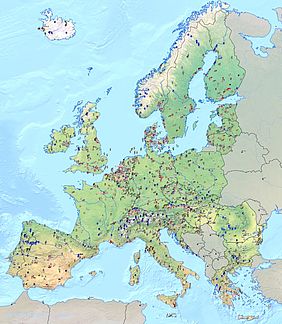Renewable energy statistics 2020, published by the EU’s official statistics office Eurostat, provides recent findings on renewable energy sources in the European Union within three consumption sectors (gross electricity consumption, heating and cooling, and transport). 2018 is the last year for which full-length and exact data is available. Along with general renewable energy statistics, the report monitors achievements and the national actions plans of EU member states on their way to reaching 20% renewables in final energy consumption in the EU by 2020. For 2030, the EU has set binding renewable energy targets to achieve 32% of final energy consumption from renewables.
According to the report, the EU increased its share of renewables from 17.5% in 2017 to 18.9% in 2018 (for comparison it was 9.6% in 2004). Among the EU Member States in 2018, Sweden led the way with 54.6% of energy from renewable sources in its gross final consumption, followed by Finland (41.2%), Latvia (40.3%), Denmark (36.1%) and Austria (33.4%). At the other end of the scale, the smallest share of renewables was recorded in the Netherlands (7.4%), Malta (8.0%), Luxembourg (9.1%) and Belgium (9.4%). 12 member states have already met or exceeded their national 2020 binding targets, with Sweden, Croatia, Denmark and Estonia having the highest percentage points. The Netherlands generated 7.14% of energy from renewables in 2018, 6.6% below its 14% goal for 2020, and is the furthest away from its individual target among all EU countries.
In the transport sector, the European Union has set a target to obtain 10% of its fuels from renewable sources by 2020. The progress in this area is relatively slow – the share of renewable energy in transport activities in the EU reached 8.3% in 2018 compared to 7.6% in 2017 and 1.4% in 2004. Once again Sweden had the highest share of renewable energy in transport in 2018 (29.7%), ahead of Finland (14.9%) and Austria (9.8%). The lowest proportion was registered in Greece (3.8%), Estonia (3.3%) and Cyprus (2.7%).
In 2018, the share of energy from renewable sources used for heating and cooling increased to 21.1%. If we look at 11.7% in 2004, there is a stable growth can be seen; however, little progress was made in comparison to 2017 (21%). Sweden, with 65.4%, came out on top again, followed by Latvia (55.9%), Finland (54.6%) and Estonia (53.7%).
The electricity generated from renewables during the period from 2004 to 2018 has more than doubled and comprises 32.2%, the report reveals. This growth is mainly due to an increase in wind and solar power, but also solid biofuels, including renewable wastes, because the amount of electricity generated from hydro has not much changed in comparison to the level recorded in 2008. The amount of electricity generated from wind and solar was 2.9 and 15.5 times higher in 2018 than it had been in 2008. On a national level, electricity production from renewables is the only sector where Sweden (66.2%) was unable to repeat its dominance, giving the first place to Austria (73.1%), where hydro power is the most important source of renewable electricity. In contrast, the lowest proportions of electricity generated from renewable sources were recorded in Luxembourg (9.1%), Hungary (8.3 %) and Malta (7.1 %).
